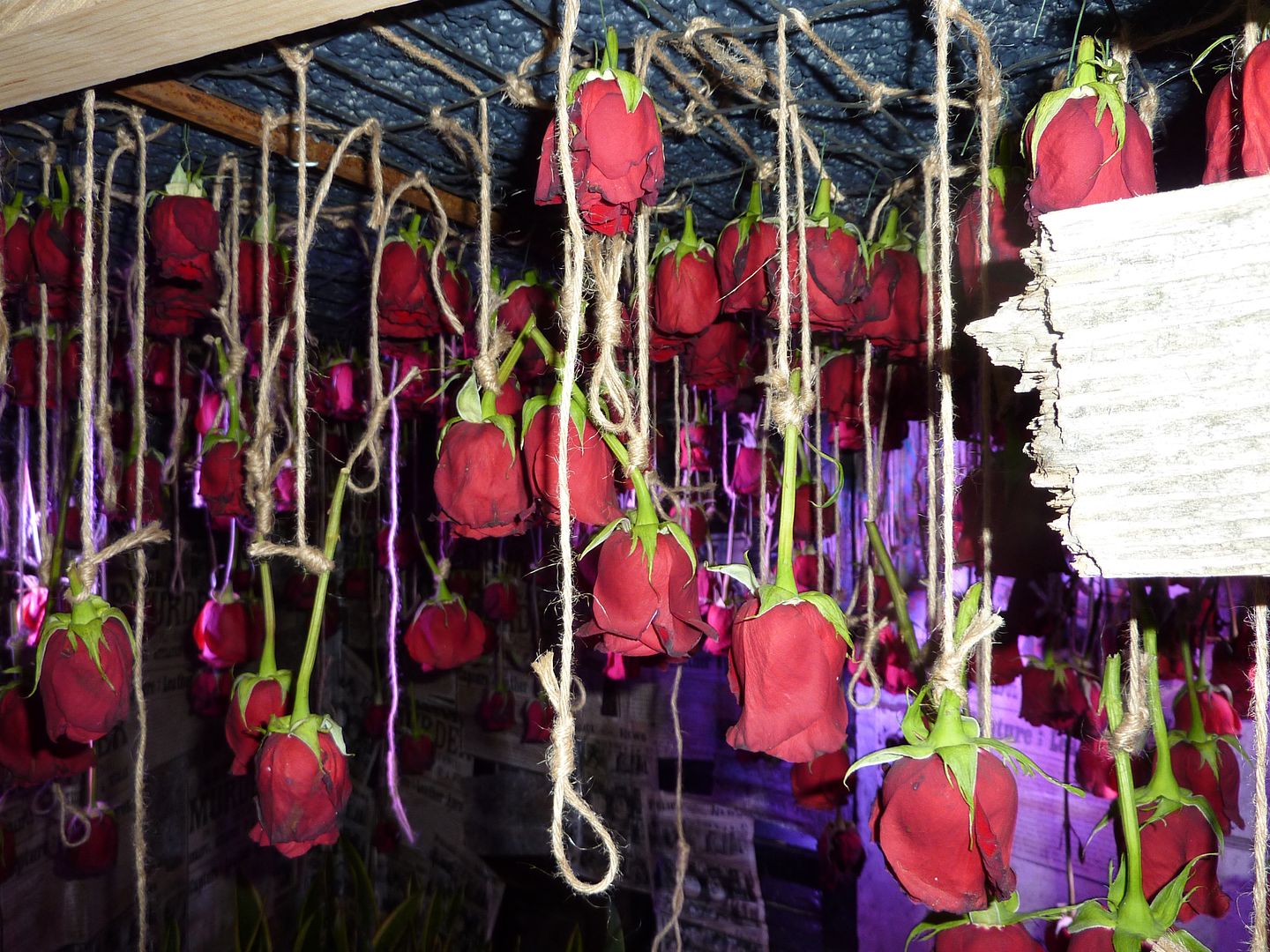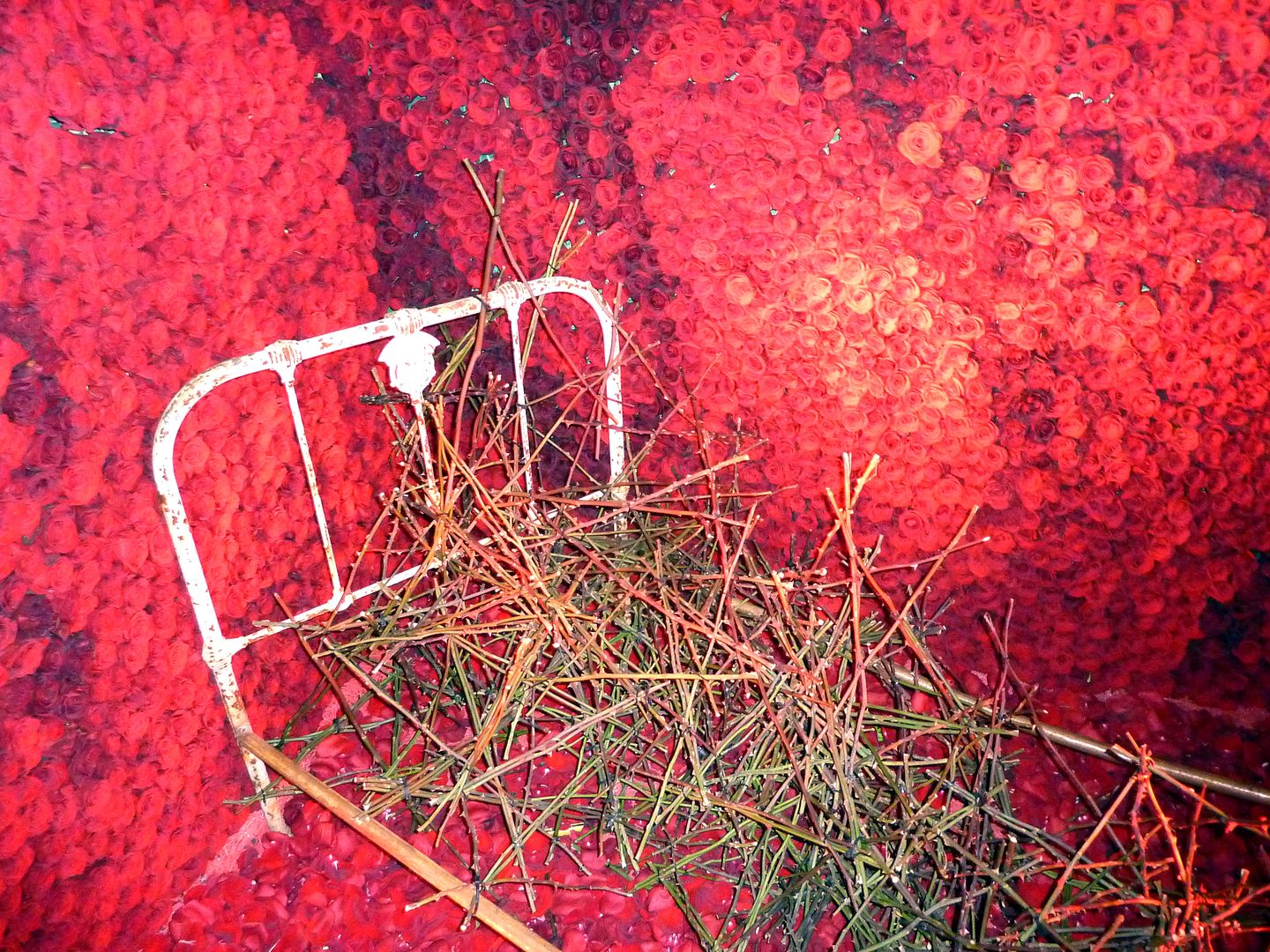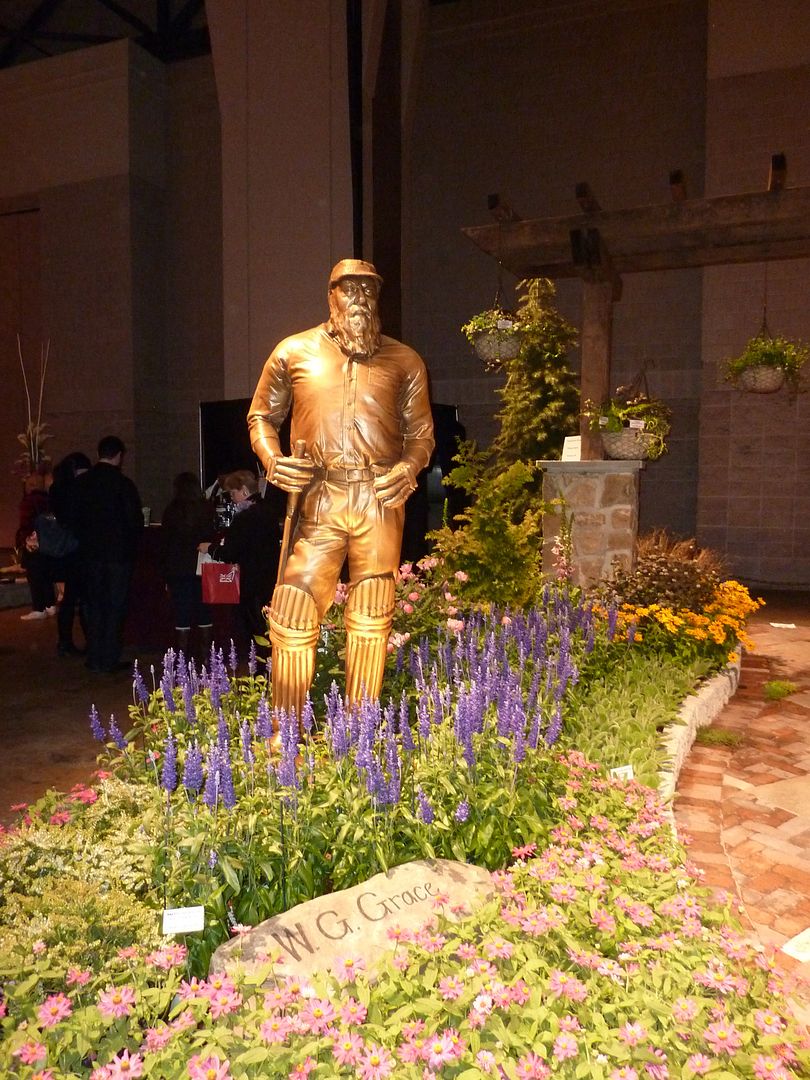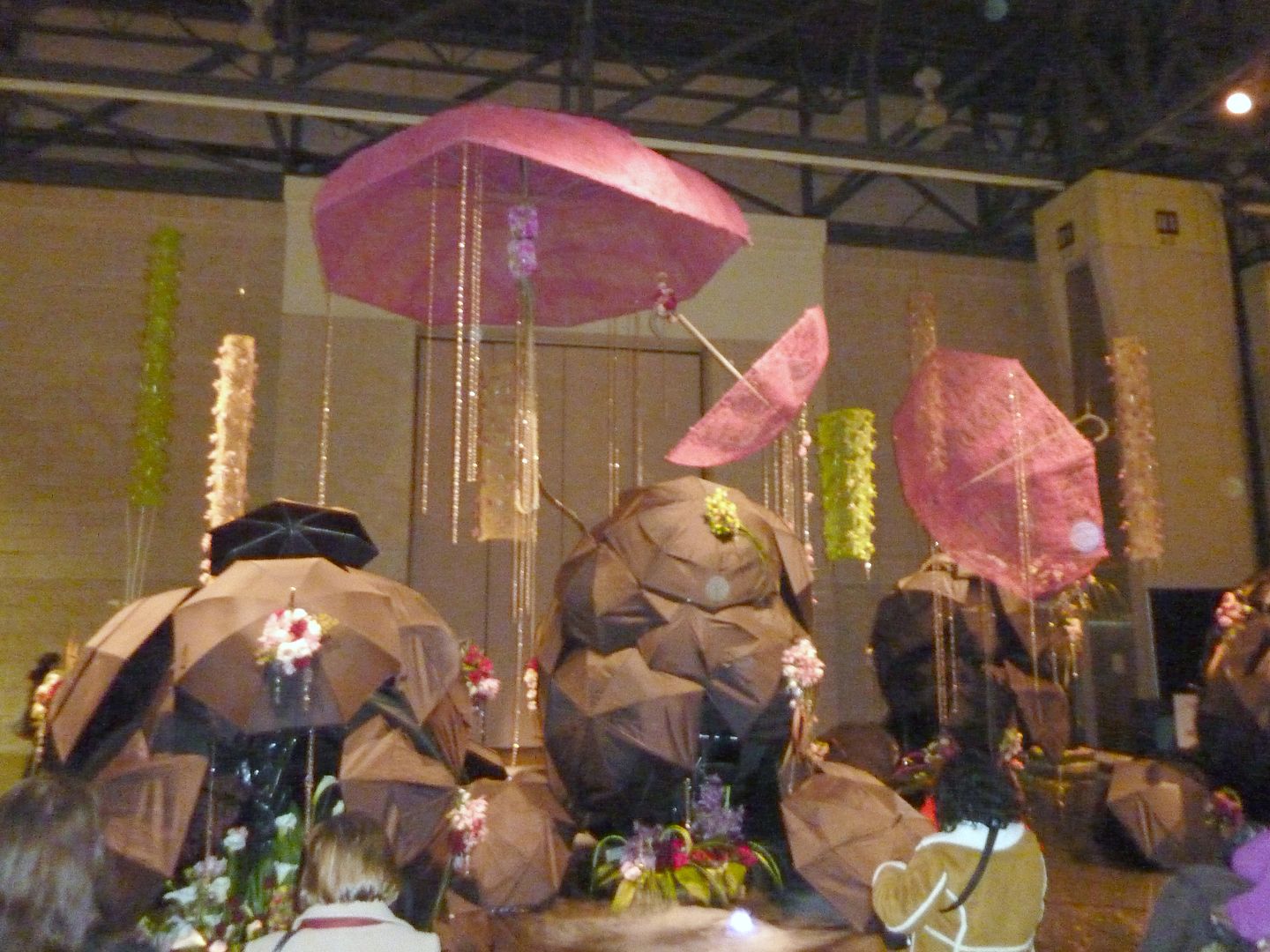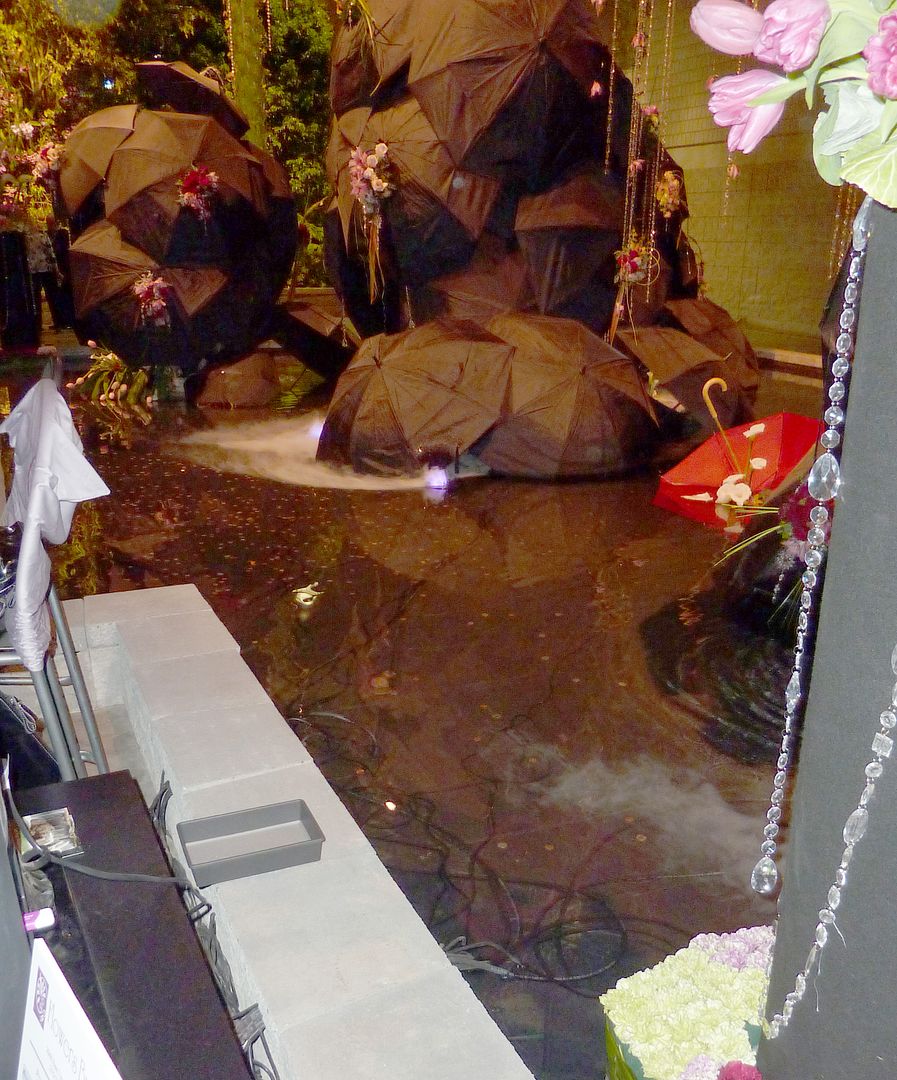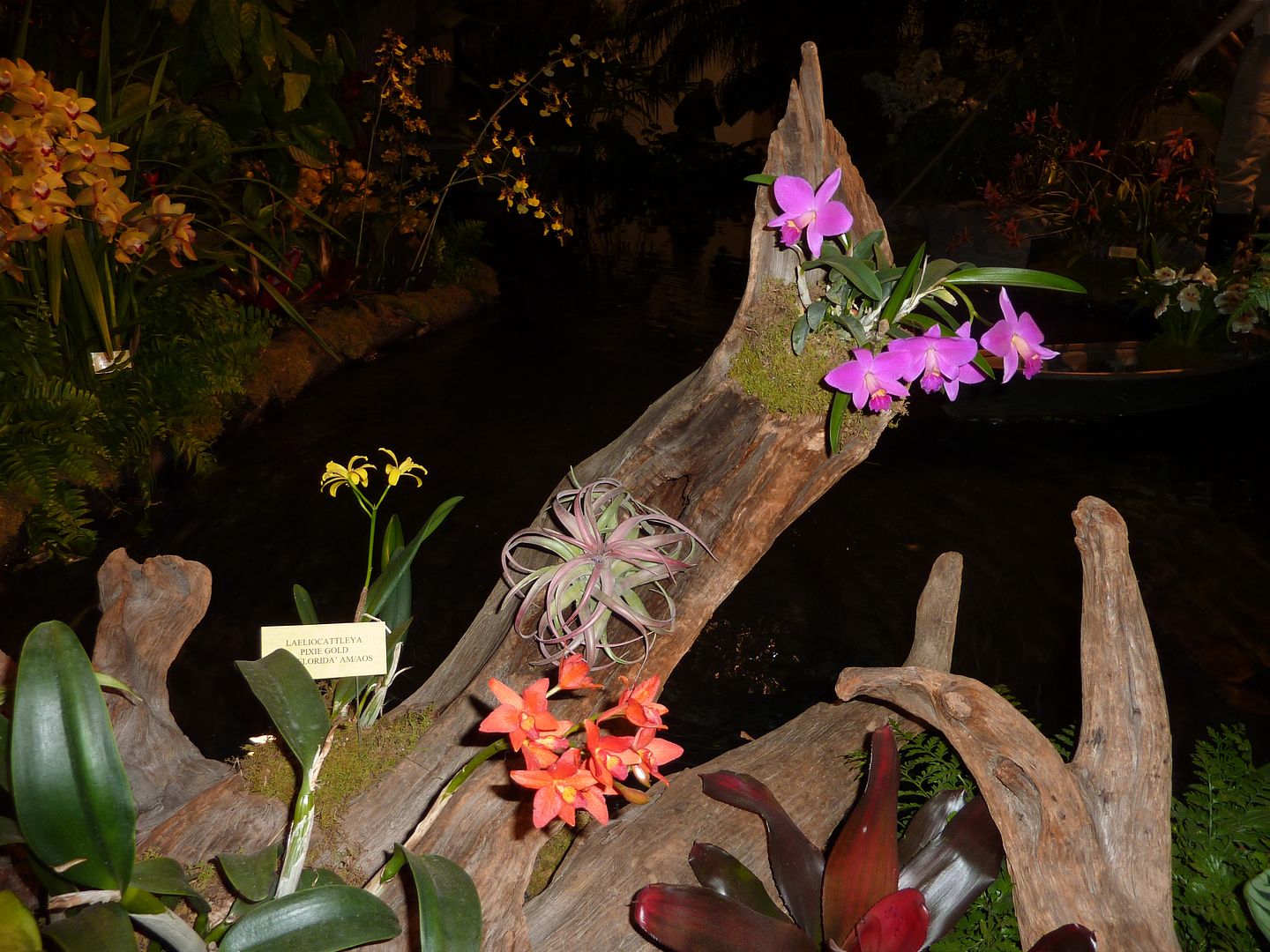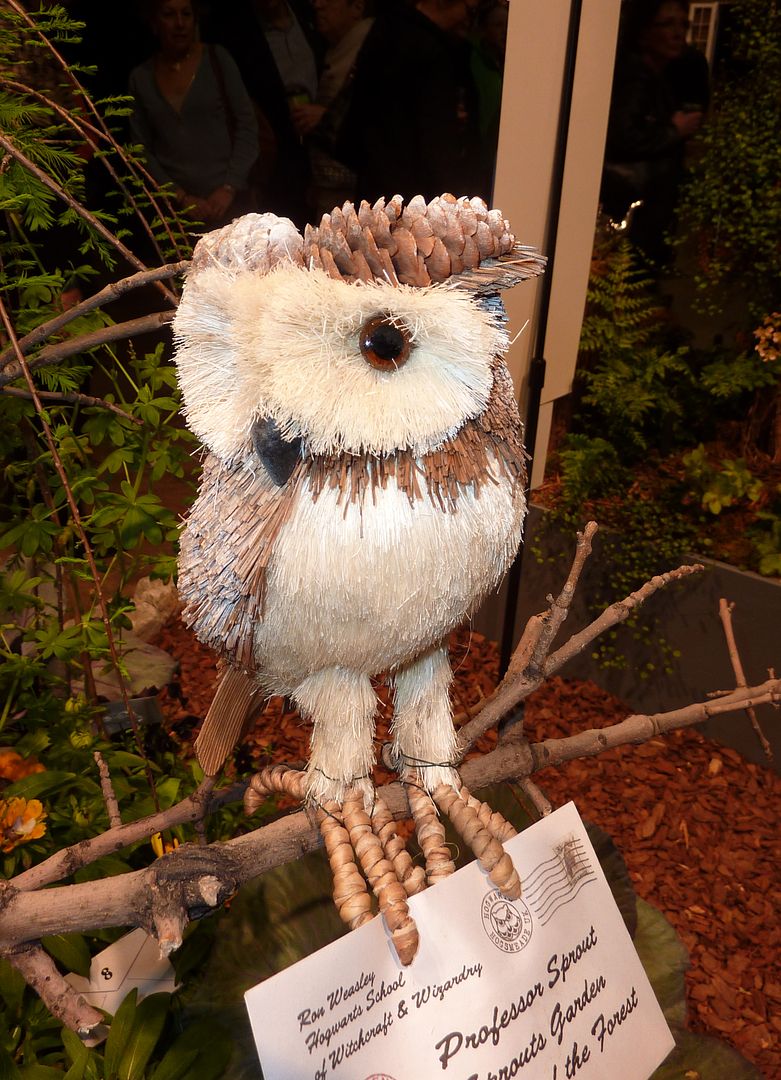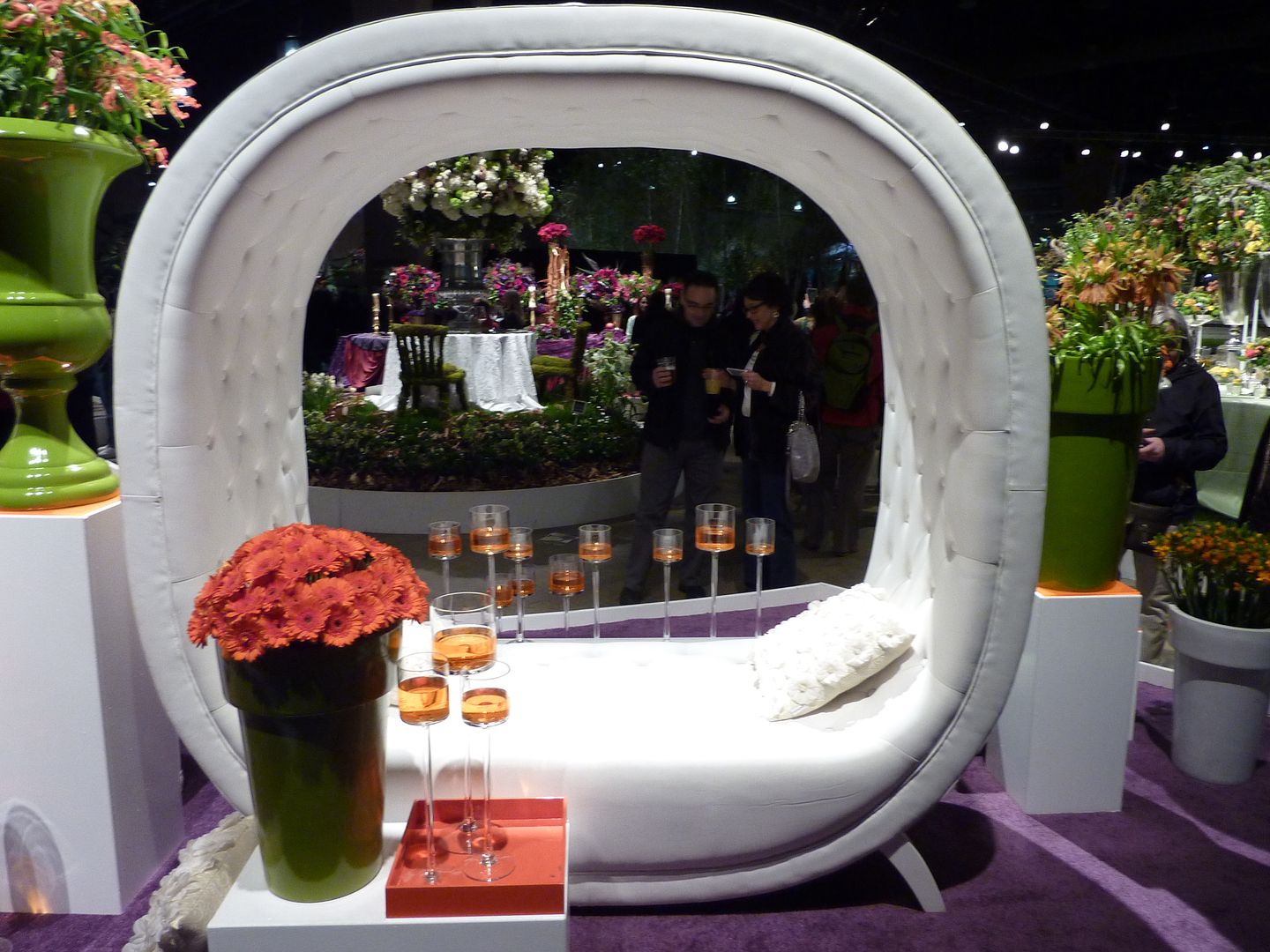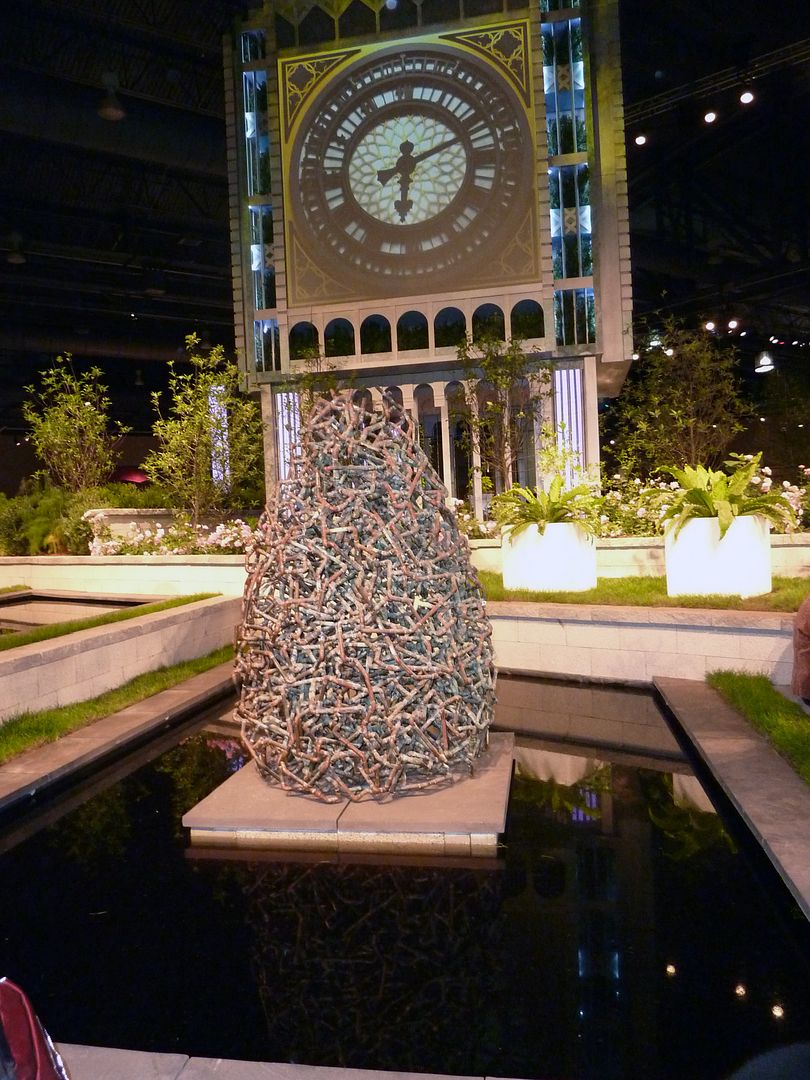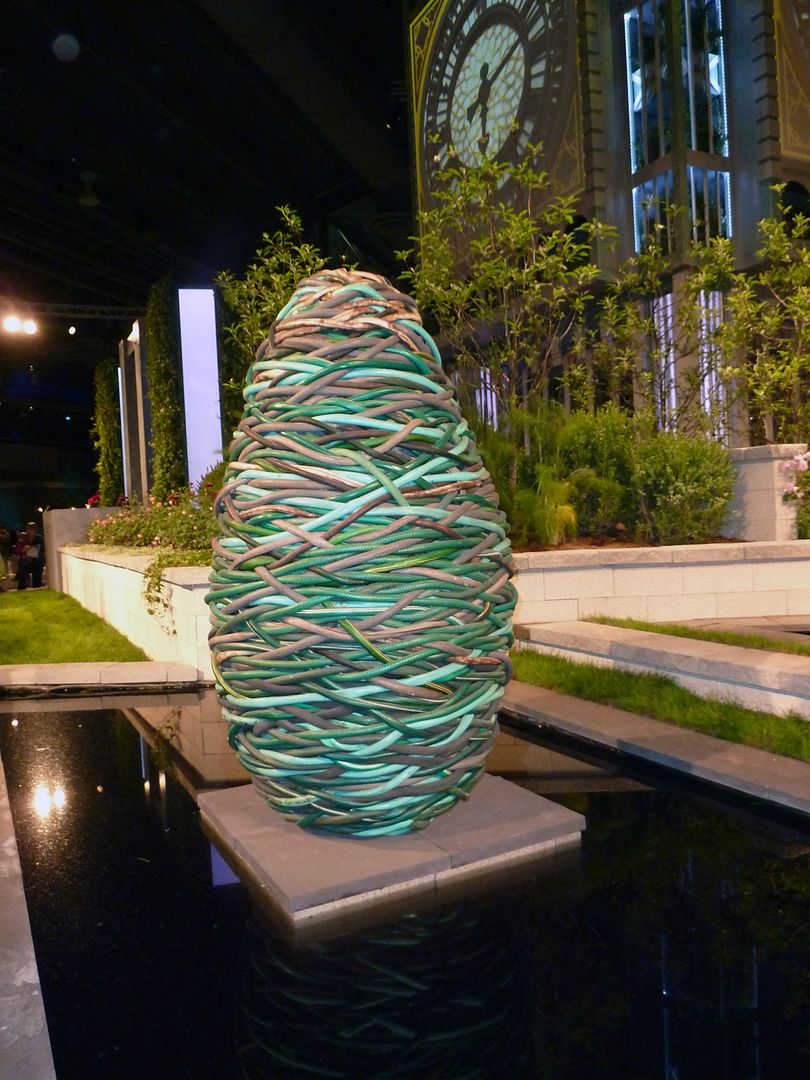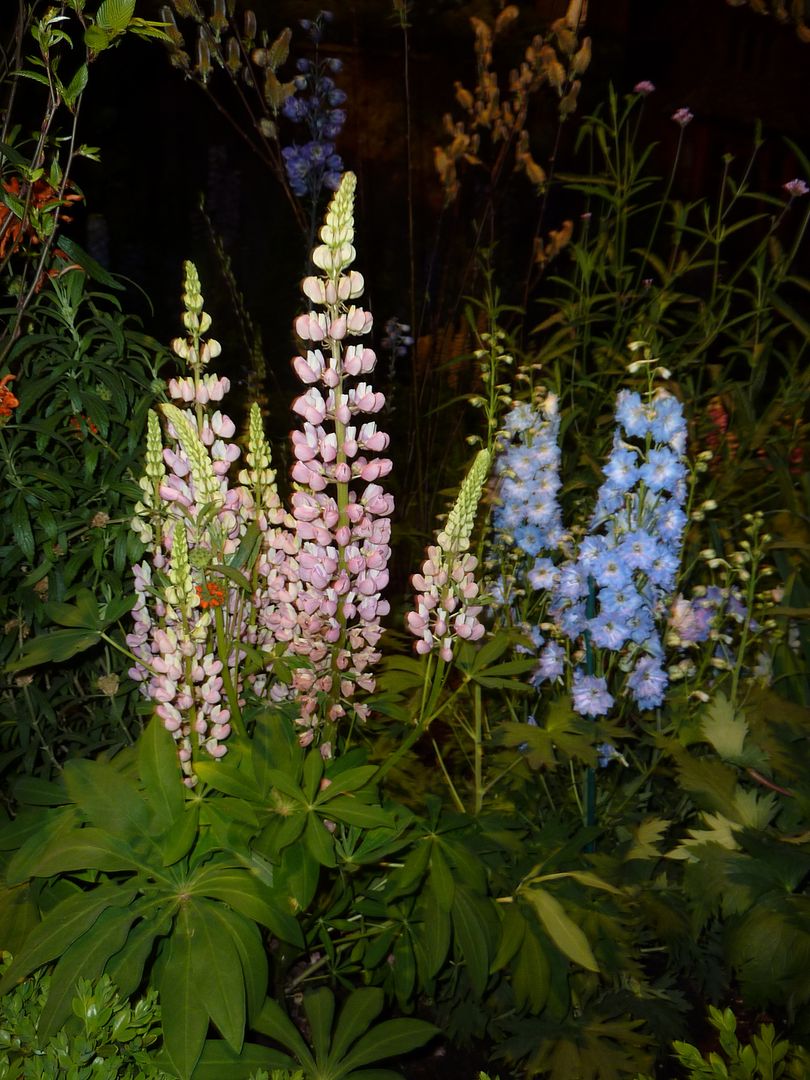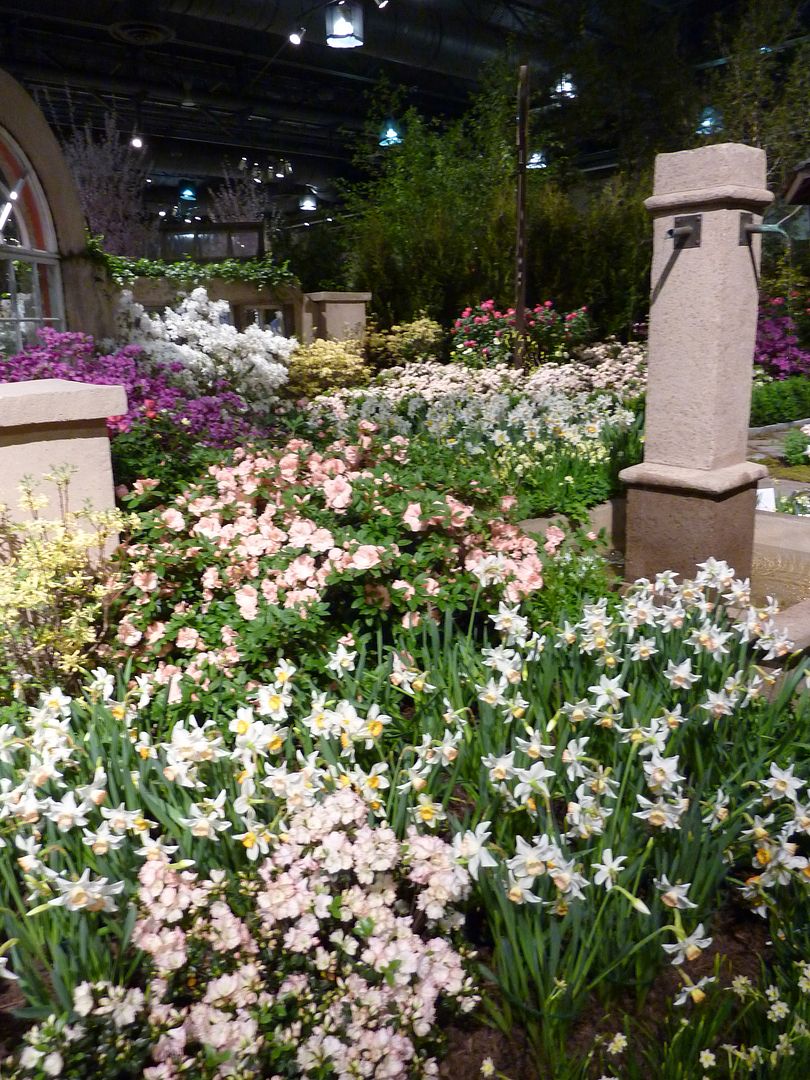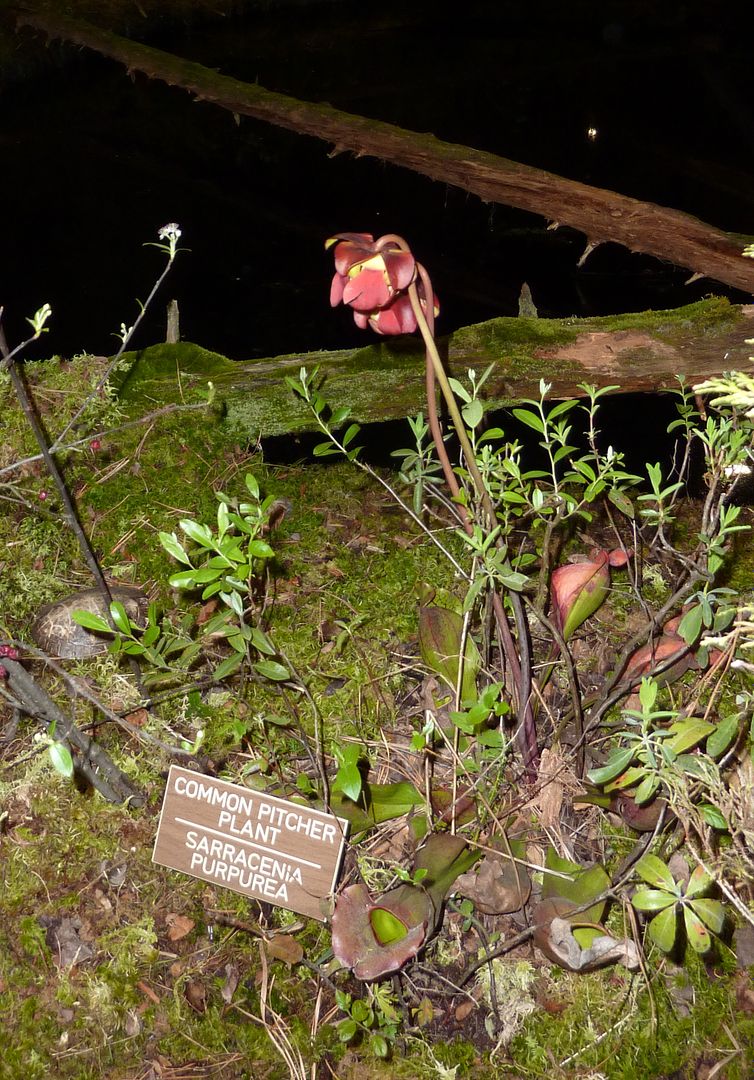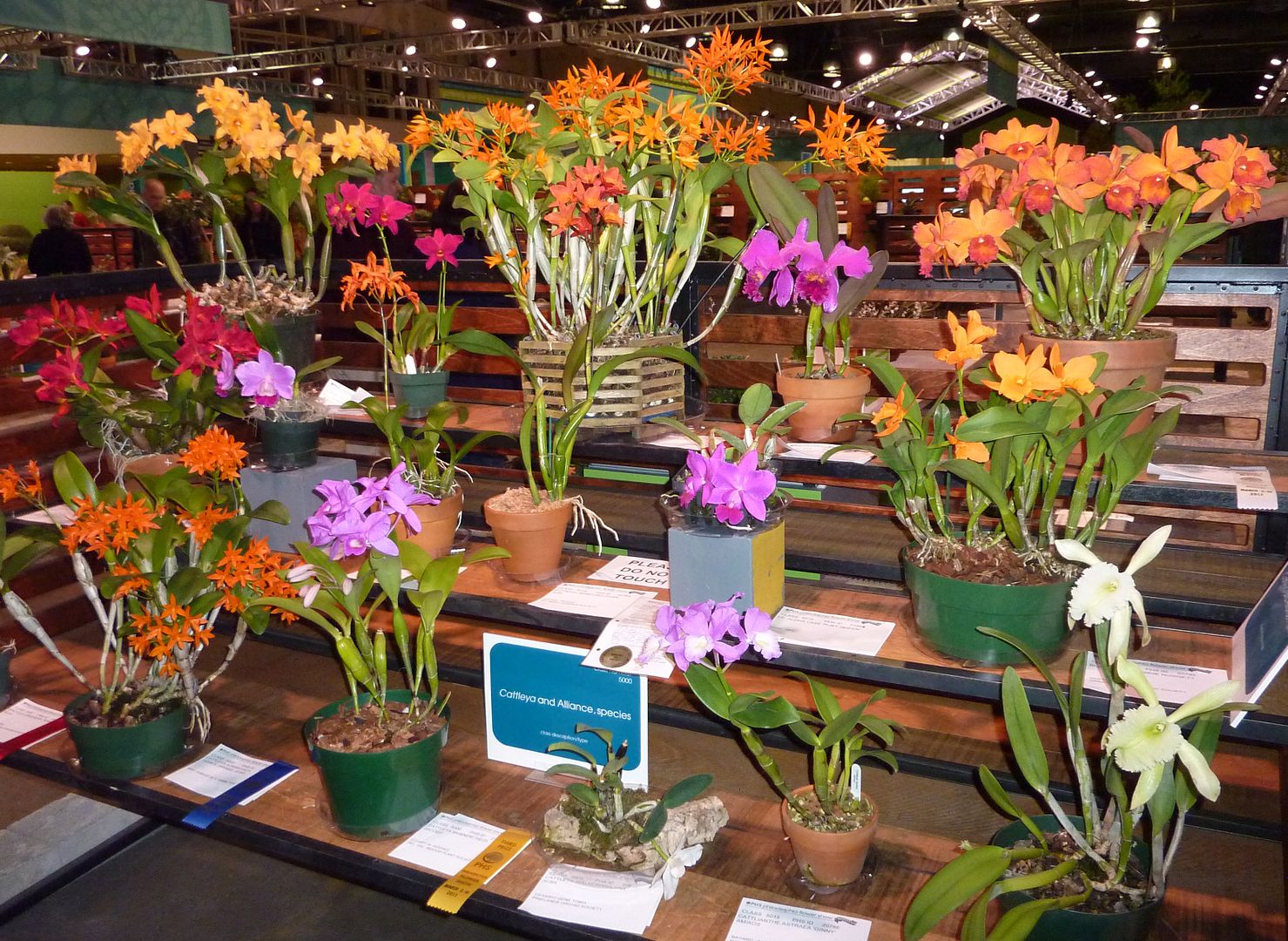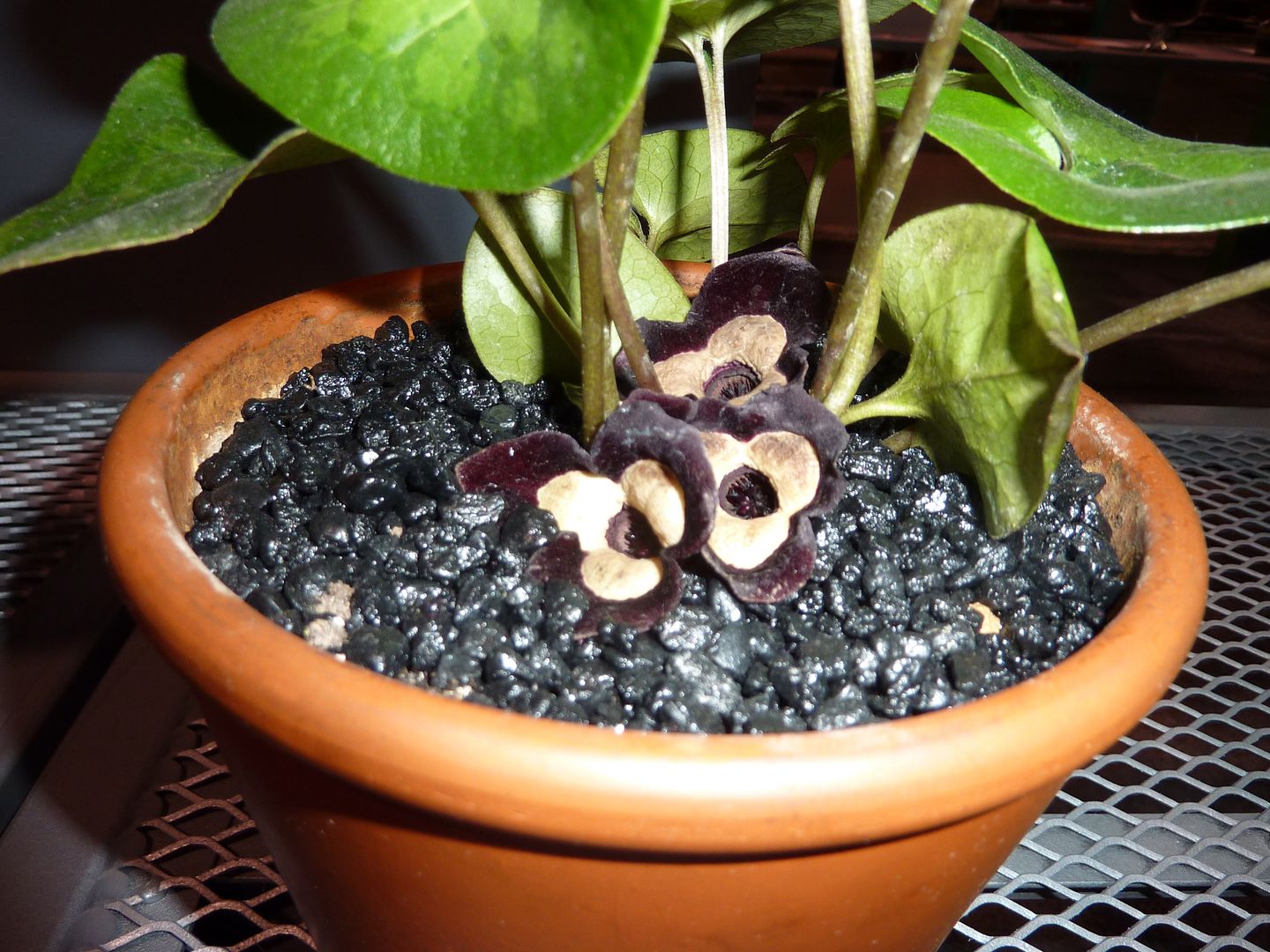I'd give this show an overall 3.5 out of 5, which is okay. I didn't feel like it was a waste of time but there wasn't a whole lot that thrilled me either. I saw a lot more green this year than in previous years and that's a problem for a flower show. Something else I learned is that the best time to go is just after 4:00pm on the weekdays.There was barely any crowd at all, and I can recall in year's past when you were elbow to elbow.
The British theme was a nice one, with lots of royal looking flower arrangements, but these were a little sparse.
The centerpiece of the show is a short replica of Big Ben, which is actually a video screen of an animated clock. Every hour, on the hour, it played a mildly offensive video that really shoved the British theme in your face.
Still-images of British comedians, rock stars, and members of the royal family were cheaply animated, like someone making an internet joke and I wondered if they even had the rights to use these images. Having them all salute
the flag of England painted on someone's ass would have fit in perfectly.
Birch Trees lined the isles though I'm not sure what they have to do with England. (Aren't they native to North America?)
So I started to walk around looking for inspiration, which sadly I don't get a whole lot of. Most of the displays were colorful and had some plants that I found impressive, but I wasn't sure about some of the combinations.
I think a lot of the props had a greater impact than the plants did.
Holy hell, where am I again? I think the designer to this one committed suicide. Hidden in the corner of the show there was a display that seemed to be more about artistic emotion and design than anything to do with gardening. I actually started to like it as an artiest. One women commented that this was a tribute to Jack the Ripper.... I'm unsure if she was joking, and can't imagine why anyone would ever promote a murderer like that.
The walls, floor, and ceiling to this little room were padded with roses, their thorny stems coating a bed, the perfect cell for a mad gardener to sleep.
An interesting take on a hanging garden, I guess. I liked the stone hands.
The display next to it was a more traditional garden setting. A path leading up to a house and a tribute to the sport of Cricket.
This display was a lot wider, but I felt this statue caught my eye the most. Once you've seen a well flowered front to a house, you've pretty much seen them all.
This display failed in a lot of ways. There are almost no flowers, though I think the pink umbrellas are made out of them. The black ones were actually fountains, though the trickling one gets from a garden hose was all that came out. I don't get it.
They had smoke machines, but they failed to hide the pool of water, and all their electrical cords were in plain view. Maybe they had it foggy for the judges, but I thought it was tacky and surely someone else could have done better.
Beside it was a tropical paradise. Orchids and assorted trees and plants of the rain forest seemed to be all that were used.
Orchids are so bright and vibrant sometimes.
A highlight was they actually had a chocolate tree with fruit on it.
Nods to the beetles were scattered through the show, but I thought they were almost too expected given the theme.
I loved this owl. I think it's made entirely out of plant material.
Witch Hazel. This plant is actual flowering at this time of year, and there are many color variations of it now.
This one had some neat furniture.
I'm actually curious where they bought this one.
Rounding back to the clock, we found some odd egg shaped statues. This one is made out of pipes. (This is a flower show right?)
Garden hose. That's what mine looks like right now out in our shed.
More traditional displays had an emphasis on bulbs. In years past I'd complained about how over used they were. They're just too easy, too common, and with the exception of last year having nothing but orchids, they were prominently featured in every display.
Lupines and Delphinium.
Hyacinths... I don't have anything to say about these. The blue ones look nice with whatever yellow fringed evergreen that is. Besides that there's just lots of color.
Tulips... lots and lots of tulips... and a cold frame that's growing bulbs for god knows why.
Tulips and Grape Hyacinth. The shoes are appropriate considering they hale from the same general part of the world that most bulbs come from.
Daffodils, Rhododendrons, and maybe one or two other things. This actually works for me. If you're going to do bulbs, make it a rocky hillside, like the slopes of a mountain but then COVER IT IN COLOR!!! This sort of does that. One year I'd love to walk through the show and feel like I were walking the center of a valley and all around me flowers grow.Or even imitate a bulb farm but make it stretch a sizable portion of the show! Avoid the "Garden Zoo" effect and make things look natural.
Our native pitcher plant, Sarracenia purpurea.
Sarracenia purpurea flower.
The Power of Poop.... and they have sunflowers for their display.
Lots and lots of sunflowers.
Orchids. Lots and lots of colorful orchids. This part of the show focused on individual plants which I noticed had improved from previous years.
Panda Flowers. This is an Asian relative of our native Wild Ginger.
Ant Plant! In the wild this plant attaches itself to a tree and grows a fat hollow cavity for ants to live inside. Some of them even produce food bodies for the ants to eat.





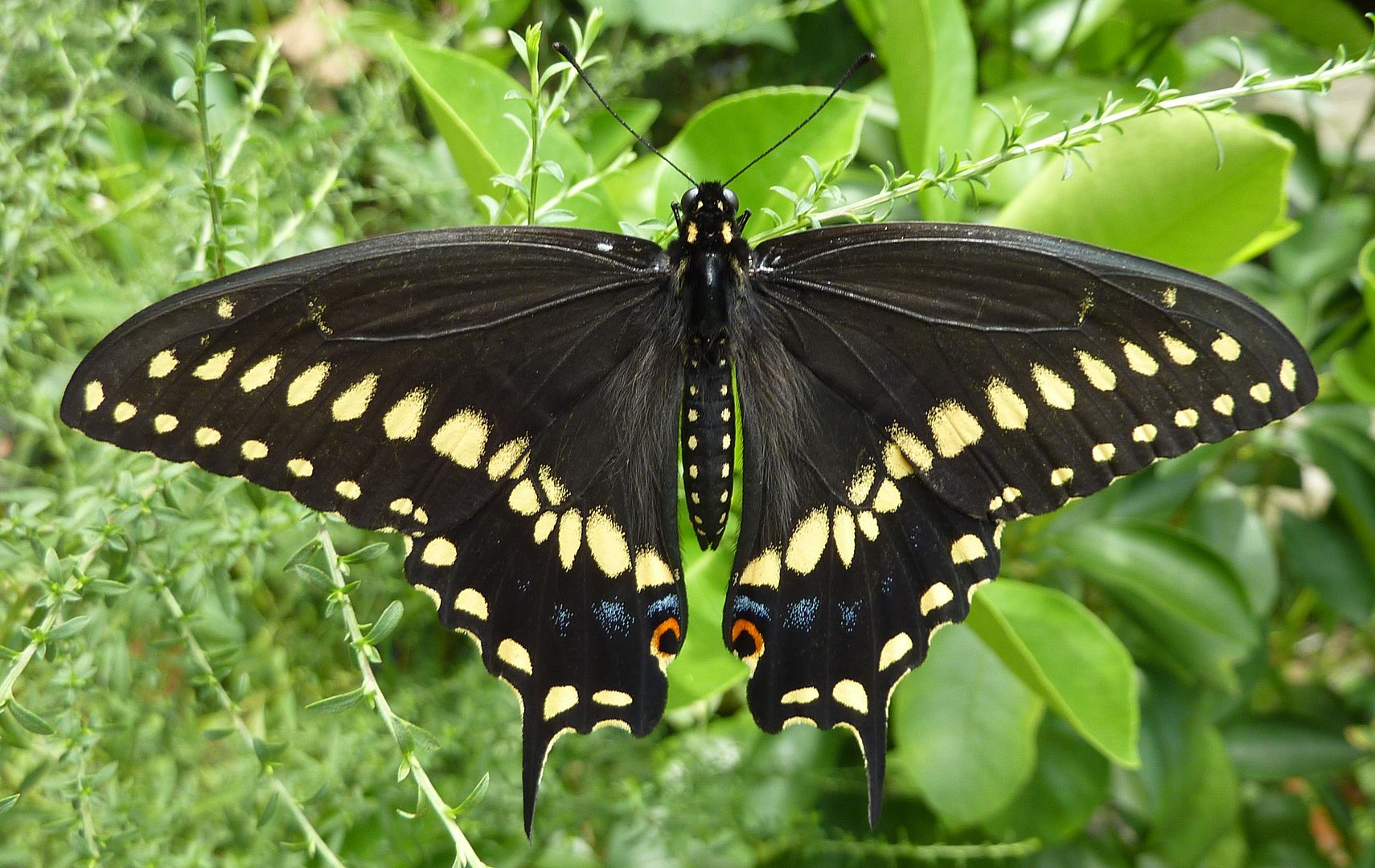

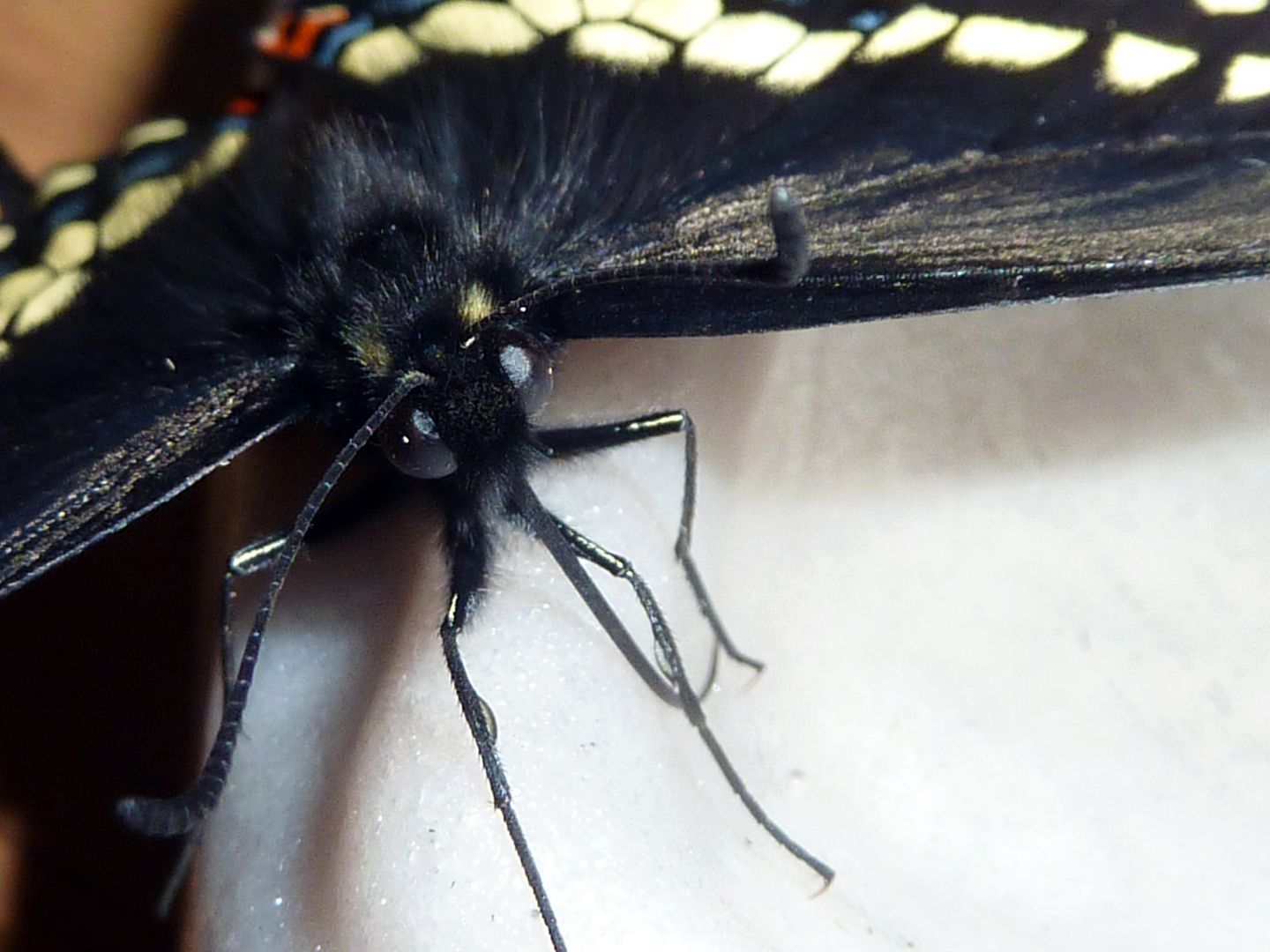






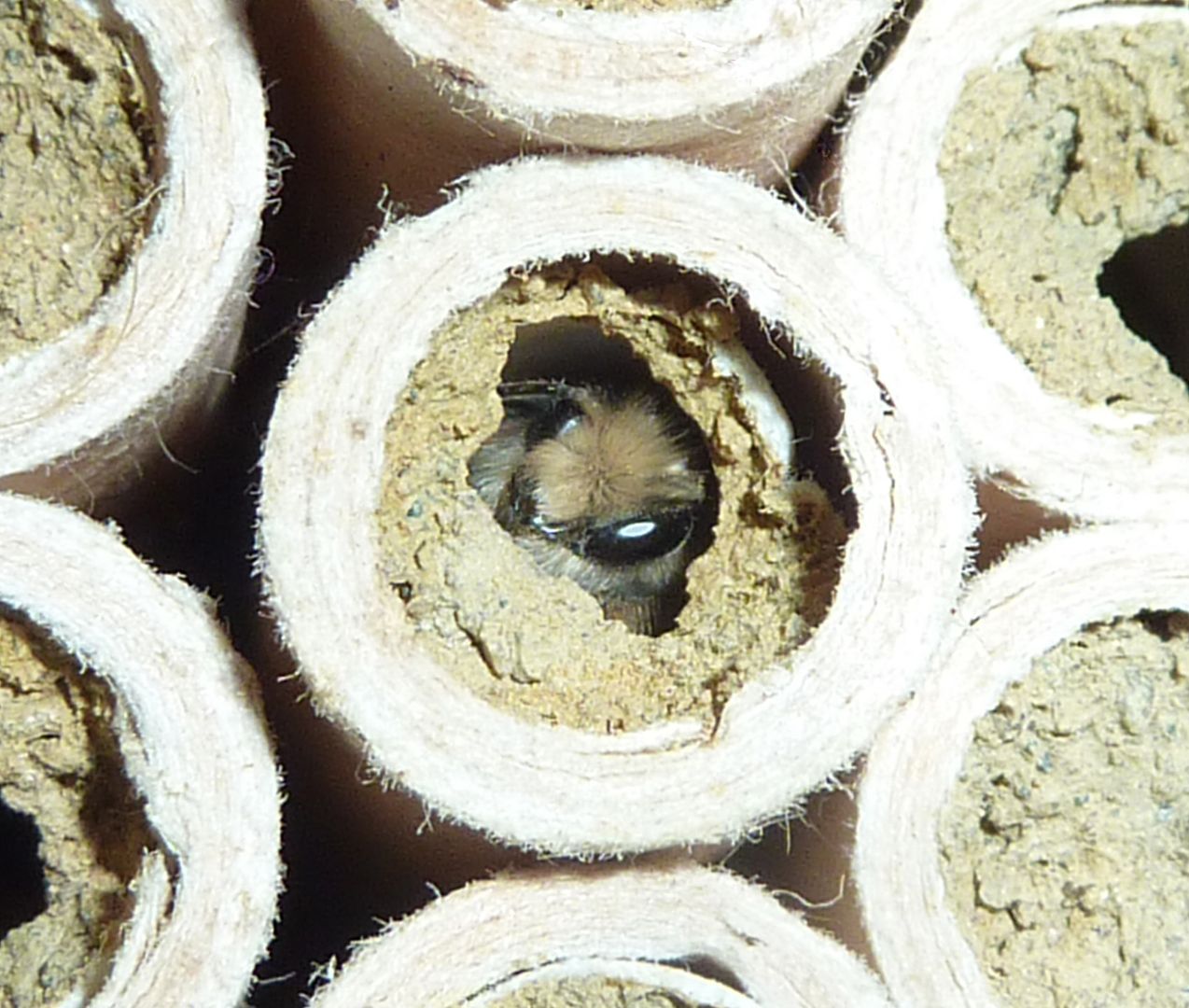
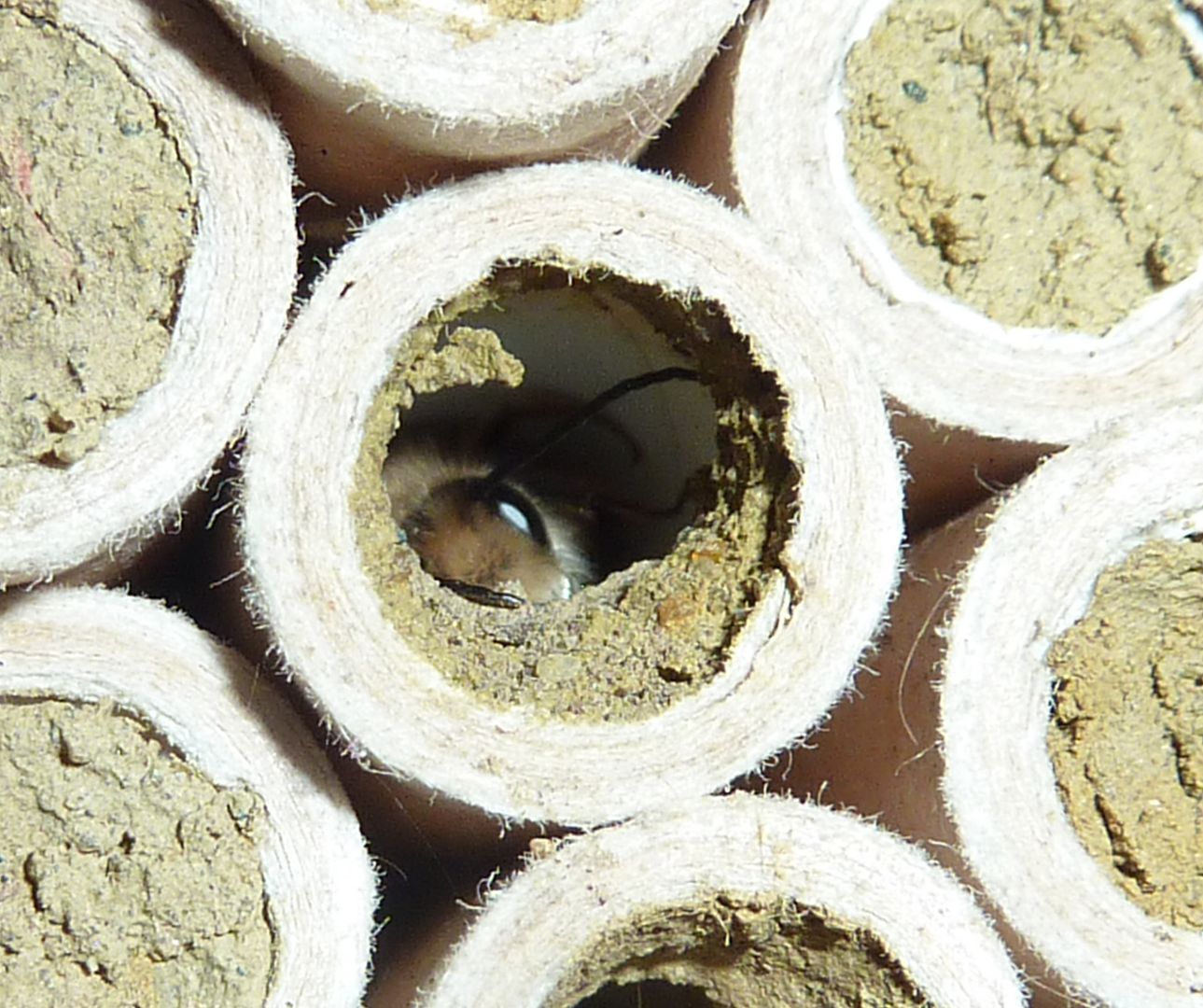


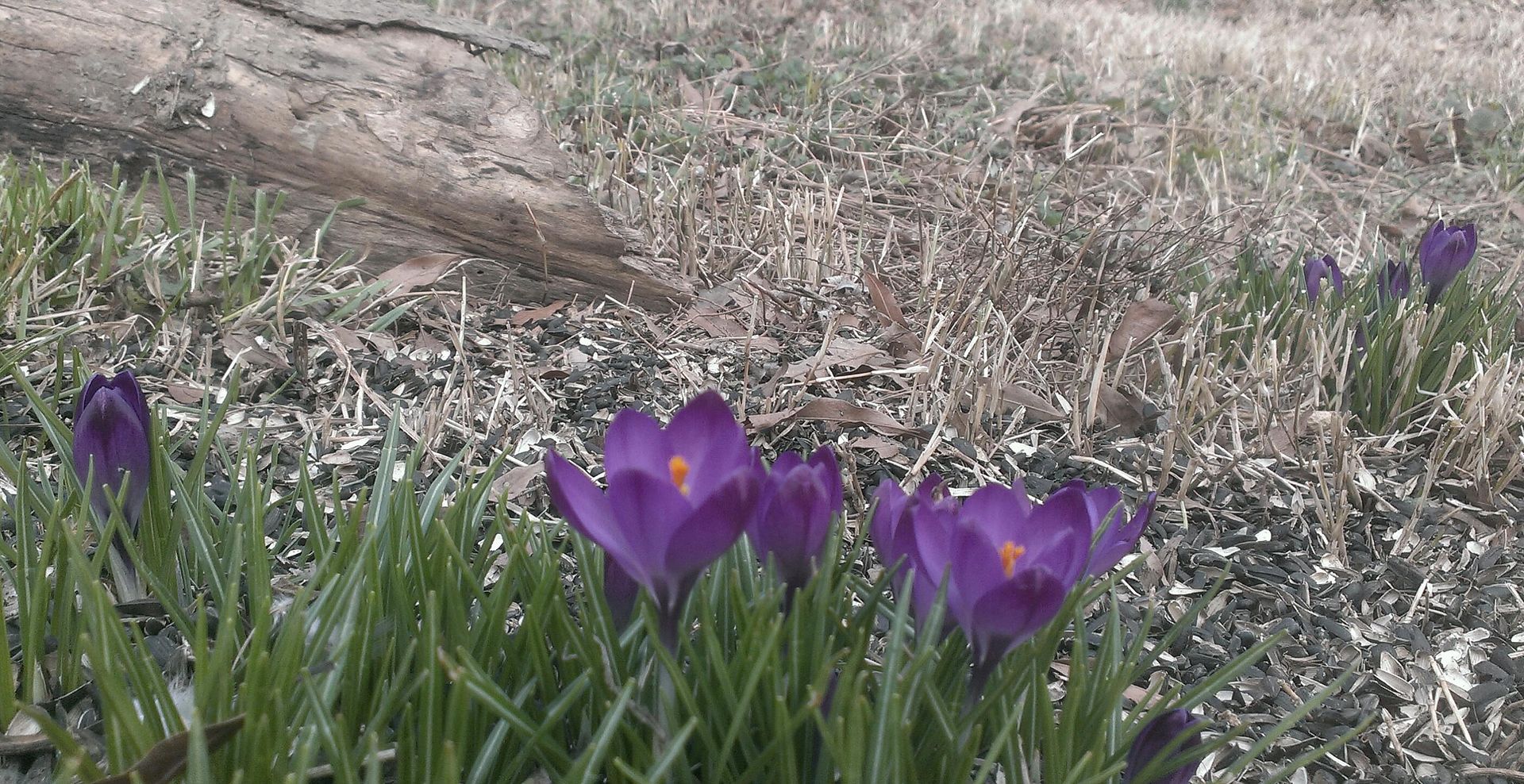






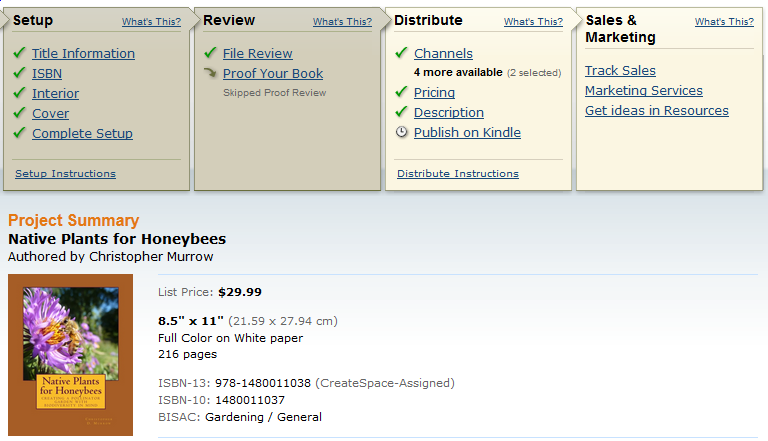 Fill out all your author and title information, get an ISBN, pick a size you want and you're ready to roll.
Fill out all your author and title information, get an ISBN, pick a size you want and you're ready to roll.





